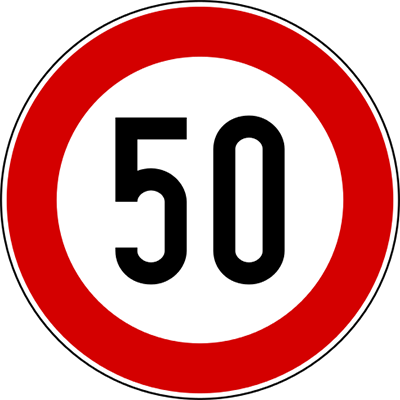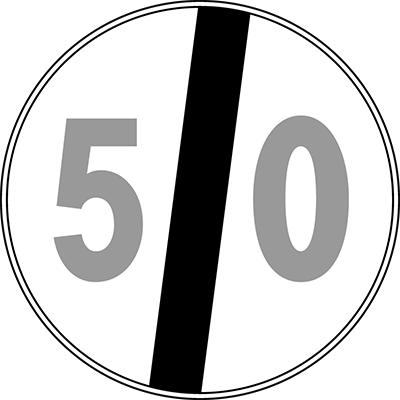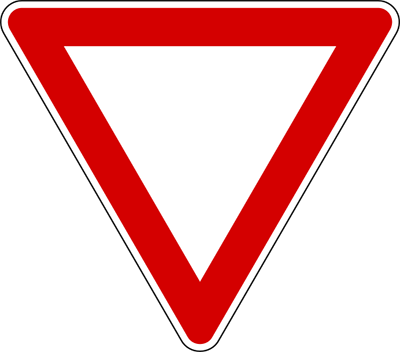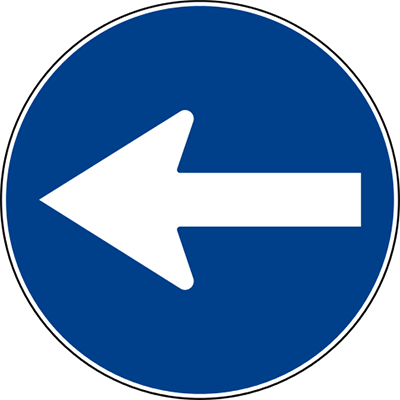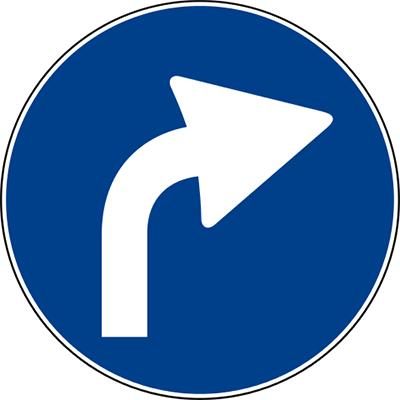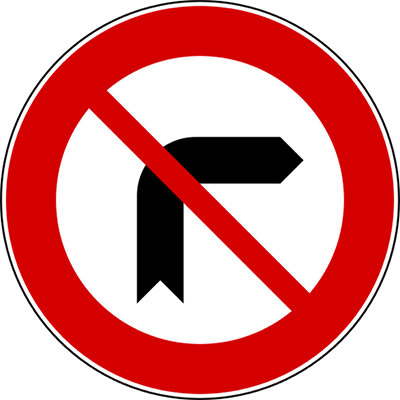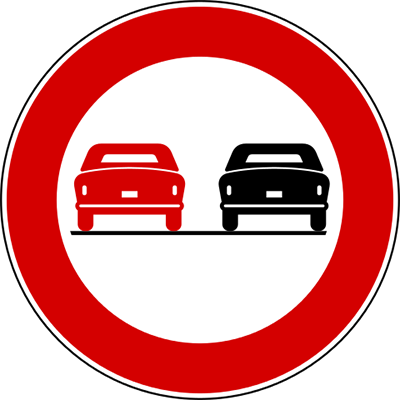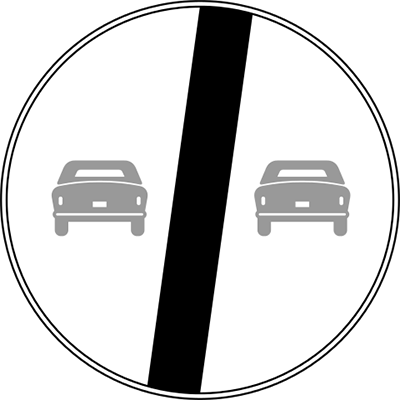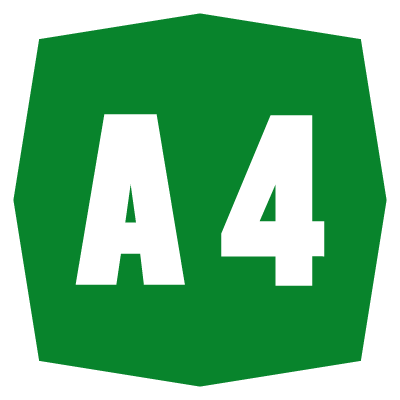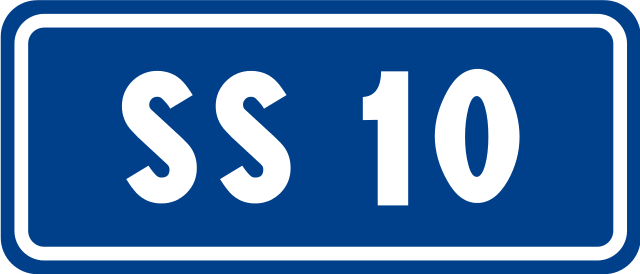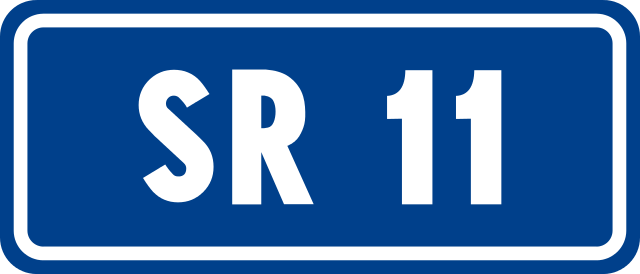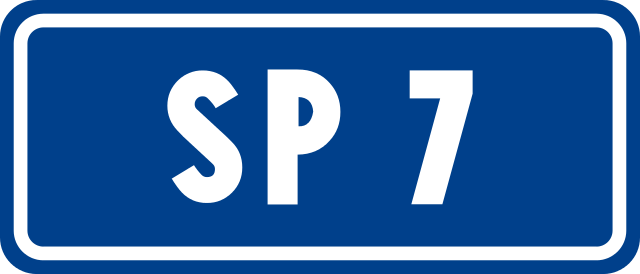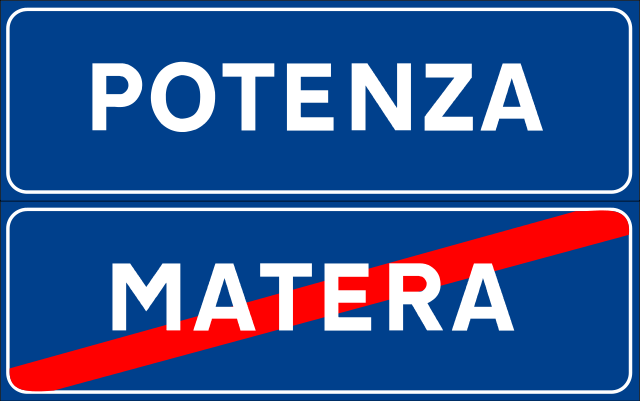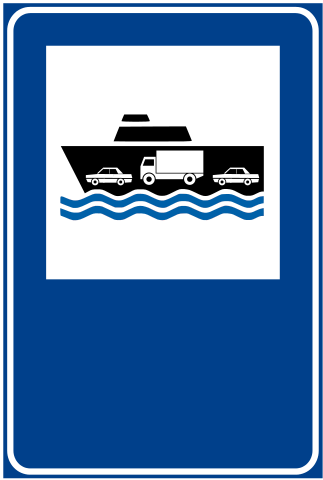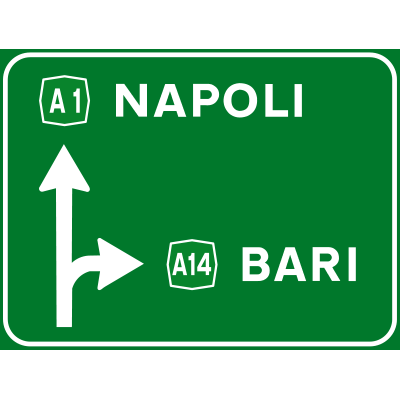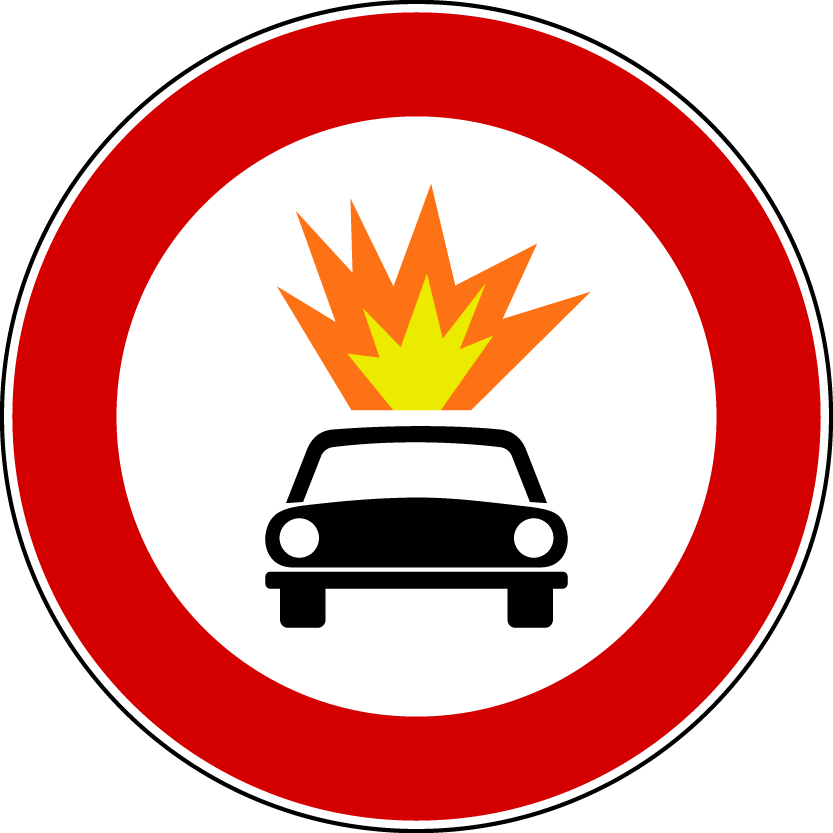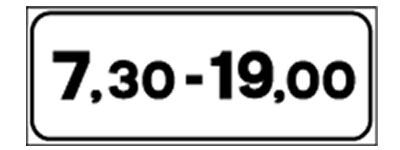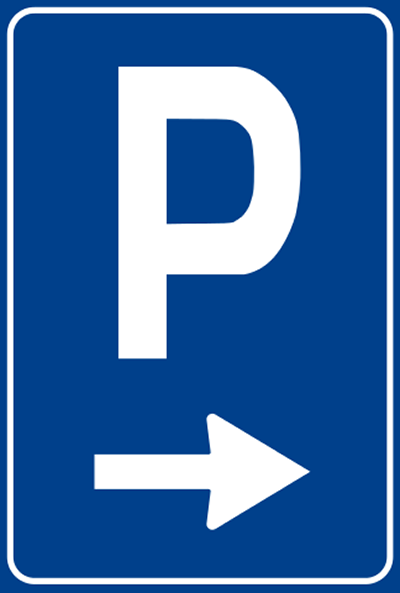In Driving a Car in Italy - Part 1, we explored some of the ins-and-outs of driving in Italy. I intended Part 1 as a reality check, of sorts. Assuming that you have now decided to consider renting a car and driving a bit through lovely Italy, here are some pointers on doing just that.
International Driving Permit
Our rental on a trip with just the two of us (less luggage space needed) was an Alfa Romeo Giulietta, parked here at Castello Brolio
OK, so you’ve decided to get a rental. Several sources suggest that one get an International Driving Permit (IDP). Why get an IDP? While renting cars, you will not be asked for an IDP. But it is my understanding that it comes into use if you are asked for one by the polizia (police)…maybe. It is evidently hit and miss in being asked for one by the polizia. So, get one or not at your own risk.
It’s less of a license and more of a translation of the one you already have. It costs you a $20 fee, the need for a couple of passport-type photos, and some time to complete the application process. Click here for more information on getting an IDP, good for one year of use.
Your Own Country’s Driver’s License
You will definitely need your traditional driver’s license to rent a car in Italy.
Renting Your Car
GO REPUTABLE: I can’t stress enough the importance of using a reputable car rental agency. You already know the big ones like Hertz, Avis, Dollar, Budget, Alamo, etc. and they each rent in Italy. The opposite of renting through a reputable car agency can be a nightmare, which isn’t what you want during your trip to Italy…you are after peaceful nights of sleep, with dreams of wine and pasta. You may find some bargain deals from less-known companies, and they may perfectly legit, but they usually/may have fees involved that they do not advertise. Though not an Italy anecdote, on a trip through the Dutch countryside for a day, we paid $375 for a one-day rental. Ouch!!! We learned a lesson, there.
So, using a reputable company will get you peace of mind, the insurance that you need, 24-hour assistance in English, English-language contracts (that you can read!!!), etc.
Here are a few reportedly reputable rental car brokers:
There are occasions to rent from a very small local agency, as the big companies might not be available. For instance, in Bellagio (at least at the time of one trip there) you will not find rental agencies on sites like those above. Before our trip, I contacted the hotel at which we would be staying and they were able to direct us to a local garage that rented out cars.
PICK-UP AND DROP-OFF: We have rented in one location and dropped off in another, several hundred miles from our starting point. Some allow this, and I suspect that some don’t. So, if that is your plan, plug your itinerary into their websites reservation boxes and see what happens.
Speaking of insurance, here is Scott driving our automatic-transmission equipped rental through the Tuscan countryside. This one happens to be a minivan, as we needed luggage space for four adults.
INSURANCE? Be sure to spring for it. You don’t want a relatively small mishap to turn into an afore-mentioned nightmare.
Your American-issued credit card may have some insurance provisions for car rentals, but be sure to check on applicability in Italy, if you plan to use that as your insurance method.
We had a 20-minute wait as THREE of these tour buses jinked back-and-forth to negotiate this curve on this main highway along the north shore of Lago Lugano
RESERVE EARLY: And, consider making your reservation before you go. It is usually cheaper to do so. And, you will get the car size that you want. For us, when we are on a two-week trip with friends, we have much more luggage than one might imagine! With friends, we have rented min-vans, just to get the luggage space needed for four adults.
MANUAL OR AUTOMATIC?: Do you know how to drive a stick shift? If so, manual transmission autos are typically a bit cheaper, and definitely more readily available. If you want the pleasure of an automatic transmission (and will all in your party who will drive know how to handle the stick?), then renting in advance is a definite must. Be sure to find the right rental deals for automatic transmission if that is an issue.
HOW MUCH ROOM DO YOU NEED?: We have gone small, and we have gone big (well, at least a minivan - like a Ford Winstar). It has depended on how many people we have, which in reality translates into how much luggage we have. Be sure to discuss that with your travel companions. We have friends who travel for two weeks with just a small carry-on size, and then we have friends who would want a large suitcase and a carry-on, or two. Discuss it and rent accordingly. We have had no problem with getting a minivan, but you will want to look early in your planning process.
FUEL TYPE: And, be sure that you know whether the vehicle you’ve rented takes gasoline (benzina) or diesel.
GPS versus Google Maps
We definitely have our opinion on rental-company-supplied in-auto GPS versus Google Maps.
If we had been using the in-auto GPS, we would most definitely not have come upon this small chapel along a back-country gravel road in Tuscany
GPS…is good. It can speak to you in English (be sure of that before rental) to give you fair warning on upcoming turns, etc. But, here’s the thing. Many towns in different provinces can have the same name. You plug in the name of a town and head out, only to find that you are headed to Town-A in Sicily when you wanted to go to Town-A in the Veneto. And, in-auto GPS doesn’t send you through the more remote countryside, and that might be what you want.
iDEVICE & GOOGLE MAPS: We like to use an iPad and Google Maps. Before our trip begins, we get an inexpensive 30-day data plan for our iPad and iPhone accounts from our U.S. cellular. Using the iPad, or iPhone or iSimilar, let’s you see the big picture that is usually difficult with a dedicated in-auto GPS. You can be driving on the Autostrada because the GPS says to do that, while you might rather be driving on the back roads of Italy so you can see the countryside…that’s why you’re driving, right? It takes a good bit of time and effort using just an in-auto GPS to figure out such a route, while your iThingie can give you the view you need to plan a more-excellent route. There are several travel books available that specialize in recommending back-road travel through Italy, and you can use those in conjunction with your iDevice to plan your route.
And, of course your iDevice can talk to you as you drive, just as the in-auto GPS does.
A GPS Tangent
Do you know the very big difference between the in-auto GPS and your iThing? The in-auto GPS has its maps ‘baked in’ — by which I mean there is a DVD or similar device within your vehicle which has the maps stored within it. As you drive, and as your car’s GPS antenna is receiving your location information and direction of travel, the display on your dash is painted with the appropriate parts of the map stored within your vehicle. This means that the vehicle you’re driving must have your country’s maps built into it, as it most likely does not have world-wide maps stored within. Most auto manufacturers will sell you the appropriate DVD or whatever with updates each year to take into account new roads, businesses, etc. This will not be a problem if you rent a vehicle with GPS provided, as it will include the map system for Italy.
In contrast, your iDealie receives its map through the cellular data that it is picking up as you drive…if you are using the cellular data function on your iItem…through the airwaves. There are no built in maps on your iGadget. This means that as long as Google (for example, and Waze is in this category) keeps the maps up-to-date on its servers, you will get the most accurate map available delivered to your device, and it will be painted onto your handheld iMechanism almost in real time. The down side is that when you are not in range of cellular coverage, you just see a blue dot showing your location, but no map to let you know where that blue dot is on the planet. I’ve experienced that in the desert southwest. There is a work-around involving saving particular Google maps to your device, but I’m not going into that here. Of note, we have never found ourselves out of cellular service whilst in Italy.
This is the only street through Amalfi…a traffic light regulates the passage of north- and south-bound traffic…pedestrians just step to the side into a shop as the vehicles (including that bus) creep through
GOOGLE DOWNSIDE: There is a down side to Google maps, though. We’ve had two weird experiences in Italy because of imprecision by the Google-Maps folks.
On a back-roads drive in Tuscany in the Val d’Orcia, we decided to take a tangential route through the countryside. What Google Map displayed on our iPhone as a road petered out completely into a dirt trail suitable only for walking – and we had to backtrack past that pack of dogs that we feared would take the doors off of the car.
A more humorous adventure found us in the most bizarre driving experience of my entire natural life. We followed Google’s route in Lombardy right into a man’s carport…really! The designated route narrowed into a driveway and then into the carport attached to his house – it didn’t continue through his backyard to Lago Garda, I can assure you! As we pulled into the carport, the homeowner opened the door to the carport with a confused look on his face as we rolled down the windows shouting ‘mi dispiace, mi dispiace!’ (I’m sorry, I’m sorry!) as we backed the hundred yards back to an actual road. What looked like a road to those Googleites with their satellite view did not actually work out in reality.
A taxi ride to dinner at La Pergola illustrates the no-road-stripe-everyone-for-themselves driving atmosphere of Rome
PAPER VS ELECTRONIC: But whatever you do, get an electronic device of some sort and don’t rely entirely on a paper map. The scale of the European road maps is so great that a map of Italy takes up just about the whole car. And, once you enter a village, smaller roads are often unmarked and one-way streets and roundabouts can be confusing without a navigation system. An added plus with electronics: you have visual access to dining, shopping, parking, and other points of interest...including street view throughout Italy if you are using Google Maps.
And speaking of Google’s street-view, it is pervasive in Italy. I often use it to plan out a route, getting a ground-level view of the countryside, to see if is more scenic than some other route. And, I’ve been known to stay up late at night well past my bedtime just traveling the roads of Italy voyeuristically using street view.
iDEVICE WHILST WALKING: And the last thing on this subject: having Google Maps on your iArticle as you walk within the narrow streets of a town or city can help you navigate to the point at which you want to arrive. Don’t use it in Venice, though…it is much more fun to get lost there, eventually finding your way by chance and fate.
That’s me in our super compact rental as we leave the Bellagio environs for a day of adventure
Similarities and Dissimilarities to US Driving
They drive on the right side of the road in Italy…whew!
No right-on-red. Do NOT turn right on red. We can turn right on a red light…not so in Italy.
You cannot text or talk and drive while holding a phone. There are very strict penalties if you are caught using a mobile phone while driving.
In the U.S., green means ‘go’, yellow means ‘caution – prepare to stop’ and red means ‘stop’. In Italy, green also means ‘go’, but yellow is for ‘frivolity’ and red is ‘merely a suggestion’.
Though roundabouts, or rotaries, or traffic circles, are gaining popularity in the U.S., they are ubiquitous in Italy (and most of Europe). When you come upon a roundabout, be prepared to know at which point you will be exiting. The key is to not panic! Upon arriving unexpectedly at a roundabout, I have been known to go around 3 or 4 times while wife Ellen researches to get us back on route – just relax and drive in circles until you get your bearings. Our system is that my wife-navigator and I visualize the roundabout as a clock face, with us coming into the roundabout at 6-o’clock on the clock. Ellen looks at Google Maps and lets me know that we will be going out of the roundabout at 10-o’clock, or whatever-o’clock is appropriate.
Useful Words Whilst Driving
Destra = Right
Sinistra = Left
Dritto = Straight
Uscita = Exit
Ingresso = Entrance
Pedaggio = Toll
Ferries
That’s our Ford minivan in a pre-dawn crossing of Lago Maggiore
AUTO FERRIES: On some Italian lakes, there are both auto and passenger ferries. As you look on-line at ferry schedules, be sure you are viewing auto-carrying ferries.
RESEARCH: A bit of research is necessary as you plan your lake-crossing driving trip. Ferries do not necessarily ply the lakes when you want them to. Look on-line at the appropriate lake’s schedule (and for the date range of your trip) and plan accordingly. You may need to bypass something you had planned to see because that delay will cause you problems later in the day as you work to meet your ferry schedule. Our experience is that the ferries do maintain a tight schedule.
Menaggio fades into the distance as we travel across Lago di Como to Varenna
READING SCHEDULES: You can see more on ferry schedule reading, using the passenger ferry to Bellagio on Lake Como as an example, here.
The Super Highway
The autostrada is similar to our interstate highway system. Autostrada highways have a highway designator starting with a capital A (e.g. A1). Unlike the autobahn in Germany, Italy’s autostrade have a maximum speed of 130kph, or 80mph.
TOLL ROADS: The autostrada are toll roads, where you take a ticket as you enter and pay the toll as you exit. Be sure to have Euro cash, as not all toll booths take credit cards.
TASTY AUTOGRILLS: Fuel stations are located in the median area between opposing lanes. And don’t forgo the dining experience in the AutoGrills located in these fuel stops. These huge stopovers have great snacks, as well as full meals offered in several food kiosks…some with cooked to order steaks, pasta, etc. Go slow on the available wine, though, as you have miles to go before you stop!
Ahhh, Verena and lunch awaits…you don’t get views like this one from the ferry while you travel the autostrada
Traffic Signs
KNOW THE SIGNS: Road signs in Italy are not always intuitive, so it is a great idea to become familiar with several before you start your driving adventure…this is especially important within towns, where there are often no-go zones that are strictly enforced. If you have driven in other European Union countries, then you will be familiar with most of the Italian road signs.
SHAPE & COLOR: To start, here is a table which will give you a general idea of the purpose of a sign, based on its shape and color.
Here are several signs with which you should be familiar…
SPEED LIMIT: 50kph speed limit and end of 50kph speed zone
MOVEMENT: Stop (in English, no less), Yield, Traffic Must Turn Left, Right-Turn Only Ahead, No Right Turn, One Way, and Zone of Traffic Limitation
PASSING: No-Passing Zone, and End No Passing Zone,
HIGHWAY DESIGNATION: Autostrada Highway Number, State Highway Number, Regional Highway Number, and Provincial Highway Number
MISC: Entering Town (or comune) of Potenza and Leaving Town of Matera, Ferry Terminal, Autostrada Directional Sign, Roundabout Directional Sign, Distance to Borgosole on State Highway 10 is 48 kilometers.
MY FAVORITE: No Vehicles Carrying Explosives Allowed.
You can see an exhaustive display of Italian roadway signs here.
Your Final Exam
OK, it’s time for a test. You’ve driven to Deruta to purchase beautiful Italian pottery for your home…maybe a set of dinner plates, a platter and a couple of serving bowls. As you approach this portal, can you drive into the centro storico, or historic center of town? Will parking be available? What else is, or is not, permitted?
The southeastern portal to Deruta
Here is an enlargement of portions of the photo. You can click on a photo to get a larger view.
Here are the answers to the test…
For the left photo:
The top portion indicates that you are approaching the historic center of the town, but does not in itself prohibit travel…it is not a ZTL.
The part of the sign with the ‘P’ indicates parking is available, but within the appropriate spaces.
The bottom of the sign indicates that parking meters are available in three places, and they are available for 1 hour between the hours of 8:00am and 2:00pm.
In the center photo:
The circle with a bus (counter-intuitively in my view) means no buses are allowed (why not a circle with a bus and with the traditional slash through it?!).
Vehicles are limited to those weighing less than 3.5 tons. Uhhh, how much does your rental weigh?
The traffic light? You could sit there all day waiting for it, as it doesn’t appear to be functioning! Maybe it is tripped if a vehicle approaches from the other side.
For the right photo:
Beware that the first street on the left is a one-way street…so don’t turn there.
Congratulations! You passed!
Thank you for spending a bit of time with me as we drive around Italy. If you did not read through Driving a Car in Italy - Part 1, now would be a good time to do that.
If you decide to drive awhile with the Italians, I hope your miles are enjoyable. You will most likely see us stopped along the side of a country road as I take a few photos and Ellen sketches and watercolors. If so, stop and say hello, or at least honk as you drive by…you know, as they say, “Honk if you love Italy”.
Ciao for now,
Steve
Feel free to comment below


